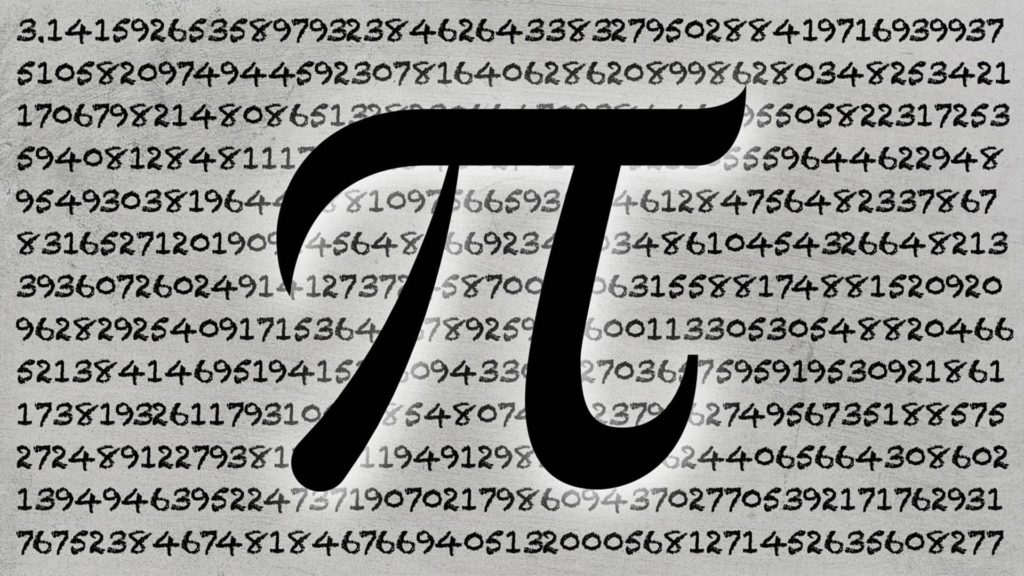Table of Contents
MUSICAL PI
 |
YouTube’s “The Pi Song” is a vocal rendition of pi to many many places. It’s a little monotonous, but surpisingly addictive.
Or listen to this piano piece based on pi. |
| Steven Rochen’s violin piece, “A Piece of Pi” is a pi-based violin piece by Steven Rochen. Listen to it here. Or try it: “A Piece of Pie” sheet music for violin or viola is available from Ovation Press. |
PI IS…WRONG?
Well, no. There are some mathematicians, however, who argue that the better and more fundamental constant is tau – which represents the relationship of circumference to radius (rather than diameter) and is thus twice as big as pi.
2 x pi = 6.28….which means that Tau Day is celebrated on 6/28. (Mark your calendars.)
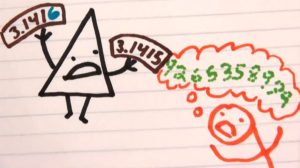 |
Happy Pi Day: Let’s Kill It! explains – via a clever video from Vi Hart and a short text from Wired magazine – just why tau is the far better circle constant. |
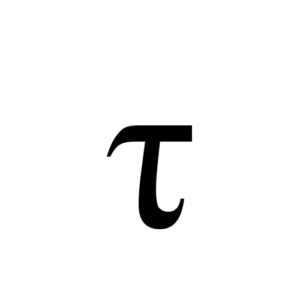 |
The Tau Manifesto by physicist Michael Hartl is a spirited defense of tau, best appreciated by students with background in trigonometry. |
| At What Tau Sounds Like, visitors can listen to a musical interpretation of tau by pianist Michael Blake. |
ALBERT EINSTEIN: Born on Pi Day, March 14, 1879
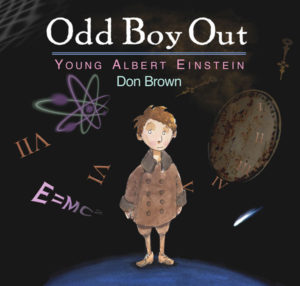
|
Dan Brown’s Odd Boy Out: Young Albert Einstein (Sandpiper, 2008) is a picture-book biography for ages 6-10, charmingly illustrated with pen-and-ink and watercolor. What readers take away from this one – I hope – is that, though those with different learning styles sometimes don’t fit in, they still can find their own way. Einstein has problems: his mother thinks his head is too big; his family calls him dopey; his teachers find him frustrating. At the same time, he’s forging an education of his own – he’s fascinated by a compass; he spends hours building a 14-story house of cards; he teaches himself geometry with the help of a friendly medical student – and ultimately his oddness is spectacularly vindicated. For ages 4-8. |
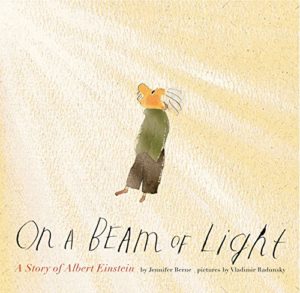 |
Jennifer Berne’s On a Beam of Light (Chronicle Books, 2013) is a charming picture-book biography of Albert Einstein for ages 5-8. |
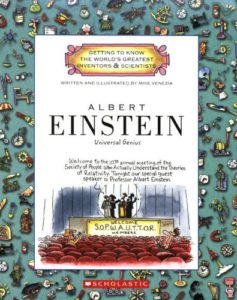
|
Mike Venezia’s Albert Einstein: Universal Genius (Children’s Press, 2009) in the extensive “Getting to Know the World’s Greatest Scientists & Inventors series is an appealing 32-page picture-book biography, illustrated with photographs and Venezia’s trademark humorous cartoons. A short catchy introduction to Einstein for ages 7-10. |
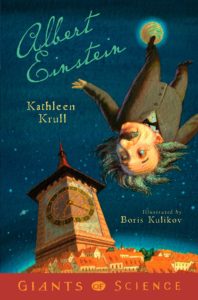
|
Kathleen Krull’s Albert Einstein (Viking Juvenile, 2009) in the Giants of Science series is an interesting and wonderfully written 128-page account of Einstein’s life and work. The book is substantive and informative, but it’s Krull’s knack for human interest and lively phrasing that cause it to stand out from the often-dull biographical crowd. For ages 10 and up. |
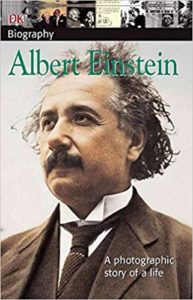 |
Frieda Wishinky’s Albert Einstein (Dorling Kindersley Children’s Books, 2005) is an attractively presented 128-page biography, illustrated with many modern and period photographs. For ages 10 and up. |
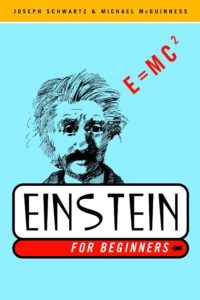 |
Einstein for Beginners by Joseph Schwartz and Michael McGuinness (Pantheon, 2003) is a multifaceted, catchy, and clever graphic presentation – yes, cartoons, but sophisticated cartoons – of Einstein’s life, times, and scientific accomplishments. A good pick for ages 12 and up. |
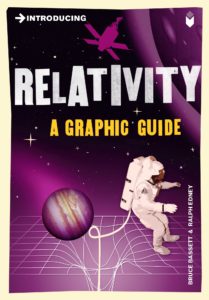 |
Gravity’s relationship to the curvature of space-time is hardly a simple concept, but Bruce Bassett’s Introducing Relativity: A Graphic Guide (Totem Books, 2005) – an illustrated historical approach to Einstein’s famous theorem – is a good bet for interested teenagers. |
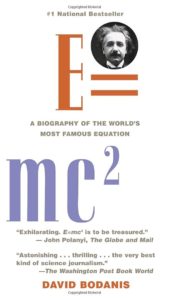 |
By David Bodanis, E = mc2: A Biography of the World’s Most Famous Equation (Berkley Books, 2000) is history and science for a popular audience. The book covers the components of the equation one by one (E, m, c, and squared), plus accounts of the many scientists whose research preceded Einstein. For teenagers and adults. |
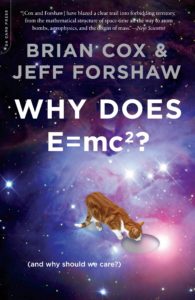 |
Why Does E=mc2? by theoretical physicists Brian Cox and Jeffrey Forshaw (Da Capo Press, 2010) is a fascinating and reader-friendly approach to Einstein’s special theory of relativity and modern physicists’ views of the universe. For teenagers and adults. |
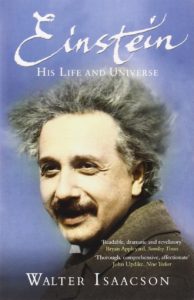 |
Einstein: His Life and Universe (Simon & Schuster, 2008) by Walter Isaacson – famed for his best-selling biographies of Benjamin Franklin and Steve Jobs – is a fascinating read for older teenagers and adults. |
| This collection of Einstein’s WWII-era letters to Franklin Roosevelt begins with his letter of 1939, generally believed to have instigated America’s race to build an atomic bomb. Einstein later referred to this as the greatest mistake of his life. | |
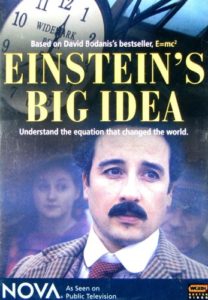 |
The PBS/NOVA program Einstein’s Big Idea is the story of E=mc2 – the “world’s most famous equation.” Included at the website are interactive activities, demonstrations, an Einsteinian timeline, a teacher’s guide, and a resource list. |
| What became of Albert Einstein’s brain? Find out at Neuroscience for Kids. | |
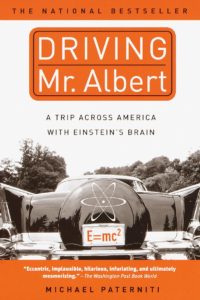
|
Michael Paterniti’s Driving Mr. Albert: A Trip Across America with Einstein’s Brain (Dial Press, 2001) is the story of an eccentric cross-country road trip in which Paterniti and elderly pathologist Thomas Harvey set off to return Einstein’s brain to his granddaughter in California. A great read for teenagers and adults – and it provides, incidentally, a lot of information about Einstein. |
| Inside Einstein’s Universe, a joint project of NASA and the Harvard-Smithsonian Center for Astrophysics, has a collection of learning resources on Einsteinian cosmology including detailed downloadable teacher’s guides and interactive web resources for grades 7-12. |
Pages: 1 2
